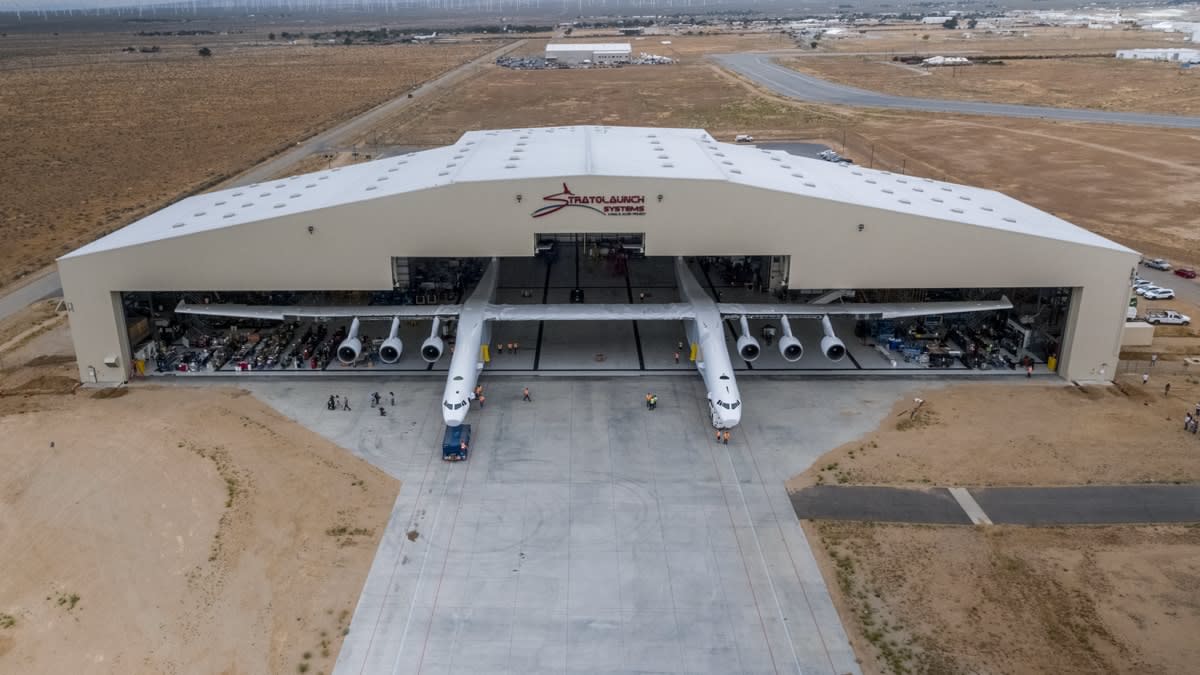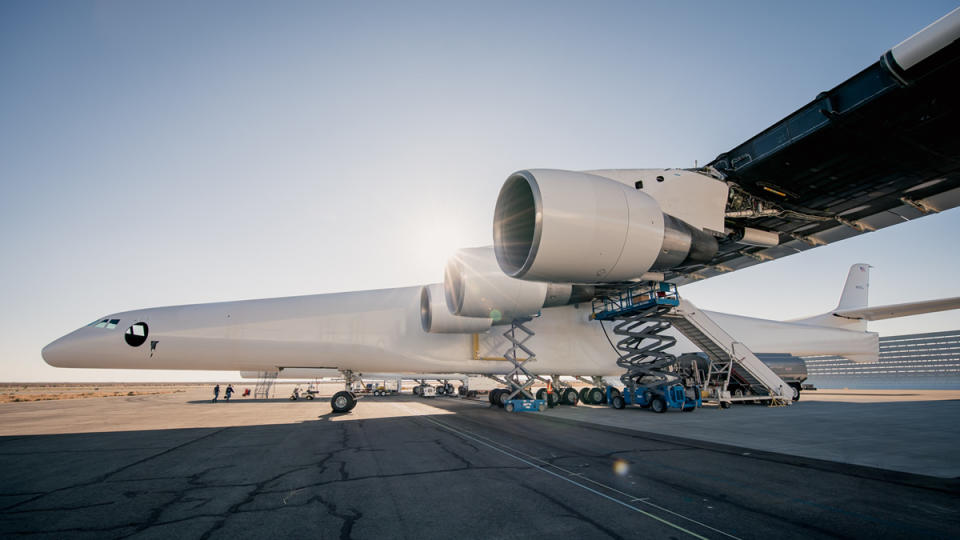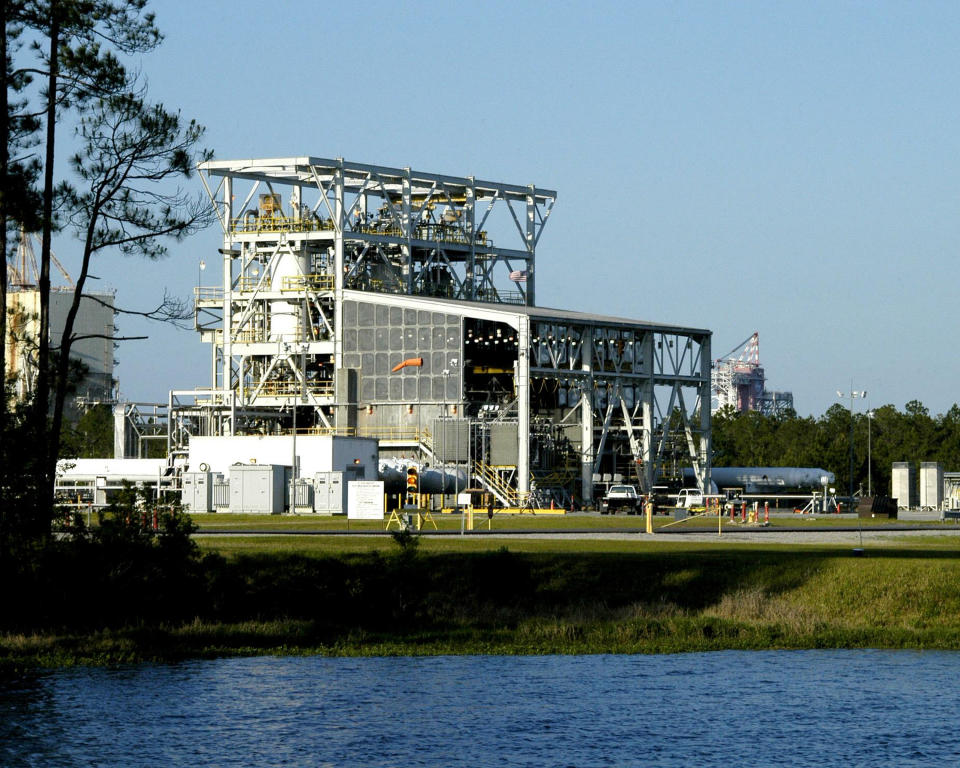Stratolaunch and NASA to Test Propulsion System

In May, Stratolaunch Systems revealed the largest aircraft in the world by wingspan, 385 feet from tip to tip. The gargantuan twin-fuselage, six-engine aircraft built by Scaled Composites is designed to carry rockets up into the atmosphere and drop them so the rockets can launch payloads to space using less fuel. Ground and engine testing is currently underway, and the six Pratt & Whitney turbofan engines were all fired up for the first time in September.
The company hopes to conduct the first launch test from Stratolaunch in 2019, but exactly what type of rocket the megaplane will carry is still unclear. Currently, Stratolaunch plans to use Orbital ATK Pegasus XL rockets for the first launch tests, with the aircraft carrying as many as three at a time. The Pegasus XL is an old and expensive launch vehicle, however. First launched in 1996, the rocket has only flown five times in the last 10 years.
Hints are starting to trickle in that Stratolaunch may be considering building its own rocket to launch from the carrier aircraft. As reported by Jeff Foust from Space News, Stratolaunch has entered into an agreement with NASA's John C. Stennis Space Center in Mississippi "for the purpose of providing reimbursable testing and related support services to Stratolaunch to support propulsion, vehicle, and ground support system development and testing activities." The agreement was posted to NASA's website in accordance with regulations in the NASA authorization act requiring the space agency to disclose such agreements.

An annex to the agreement further states that the purpose "is for the National Aeronautics and Space Administration (NASA) John C. Stennis Space Center (SSC) and onsite contractors to support the Partner's [Stratolaunch's] testing of its propulsion system test article element 1 at the E1 facility." The E1 Test Stand at Stennis is designed to test rocket engines and rocket engine components, such as liquid oxygen and liquid hydrogen turbopumps, according to a NASA slideshow on Stennis Space Center.
Popular Mechanics has reached out to Vulcan Aerospace, Stratolaunch Systems' parent company owned by Paul Allen, and will update this post with comment if it is received. Steve Lombardi, communications manager at Vulcan Inc., confirmed the agreement with NASA to Space News but declined to elaborate on the specific equipment being tested. "We’re exploring a number of launch system possibilities to provide reliable access to space,” Lombardi told Space News.

The agreement with NASA follows moves by Stratolaunch Systems to hire experts in rocket propulsion technology. The company hired Jeff Thornburg as vice president of propulsion in June. Thornburg previously worked at SpaceX as senior director of propulsion engineering, where he "served as the lead engineer and manager of methane engine systems including the Raptor engine development program." Stratolaunch also has two current job openings for the role of propulsion lead engineer.
We don't know for sure what Stratolaunch will be testing at NASA Stennis, but clues abound that it could be a new rocket engine. It certainly would make sense for Stratolaunch to develop an in-house rocket to drop from its megaplane. We just can't wait to see that colossal bird take to the skies for the first time.
h/t Space News
You Might Also Like

